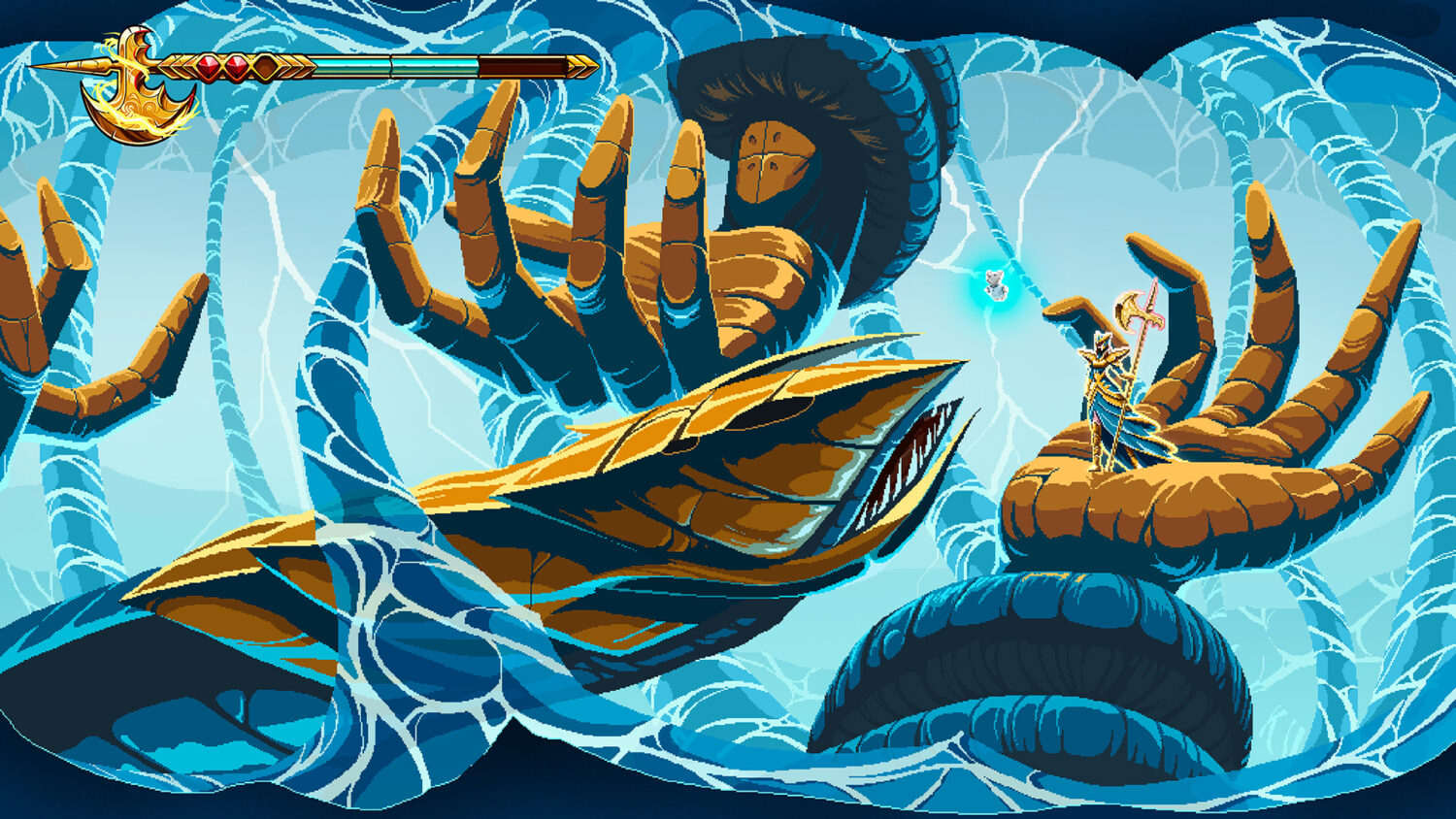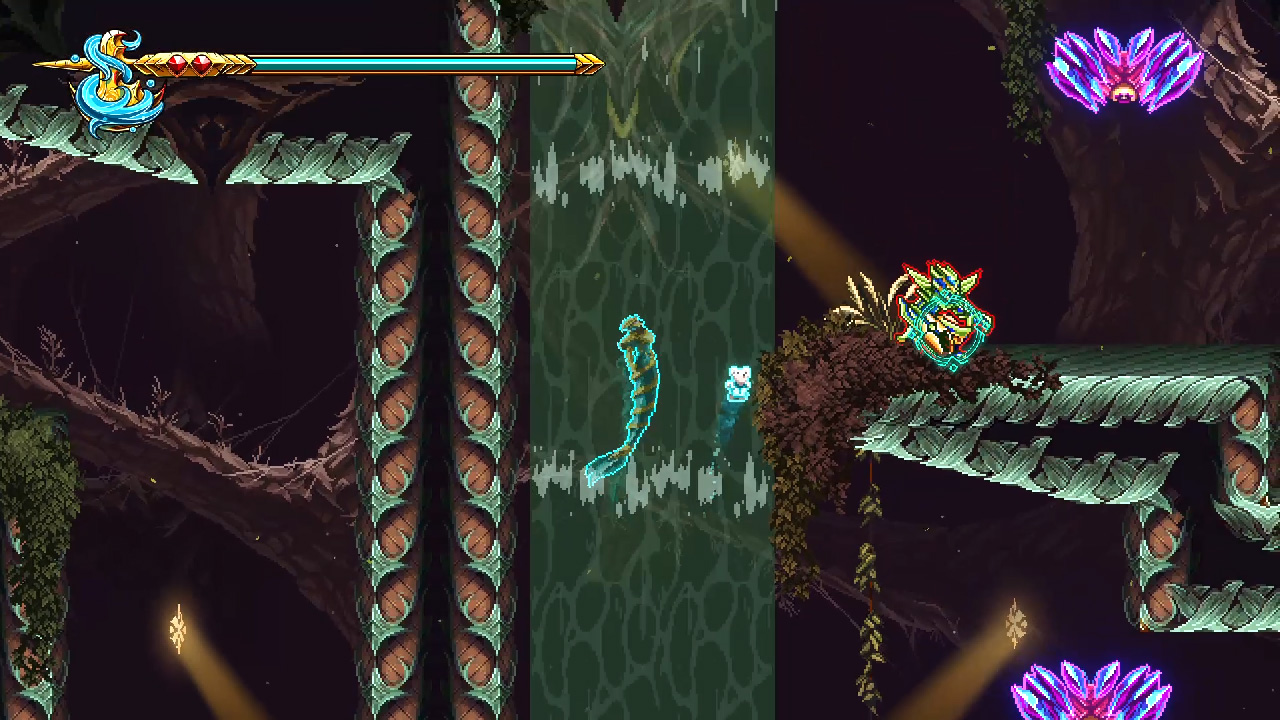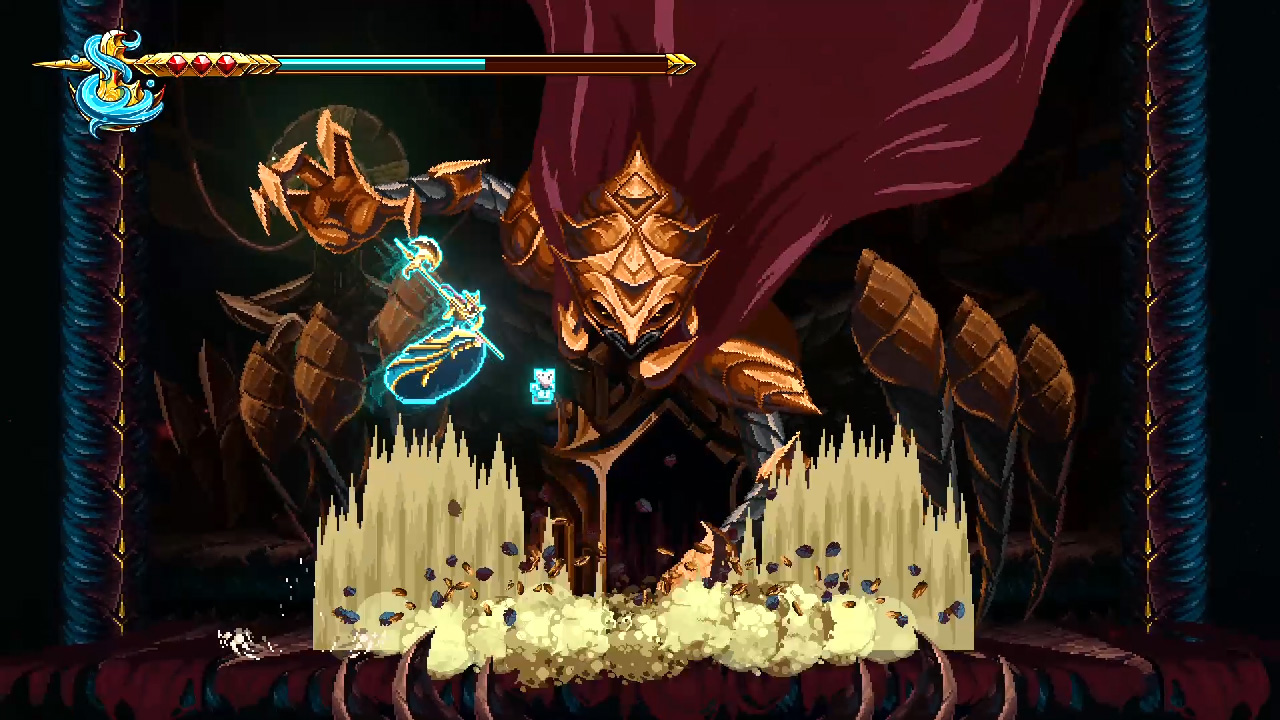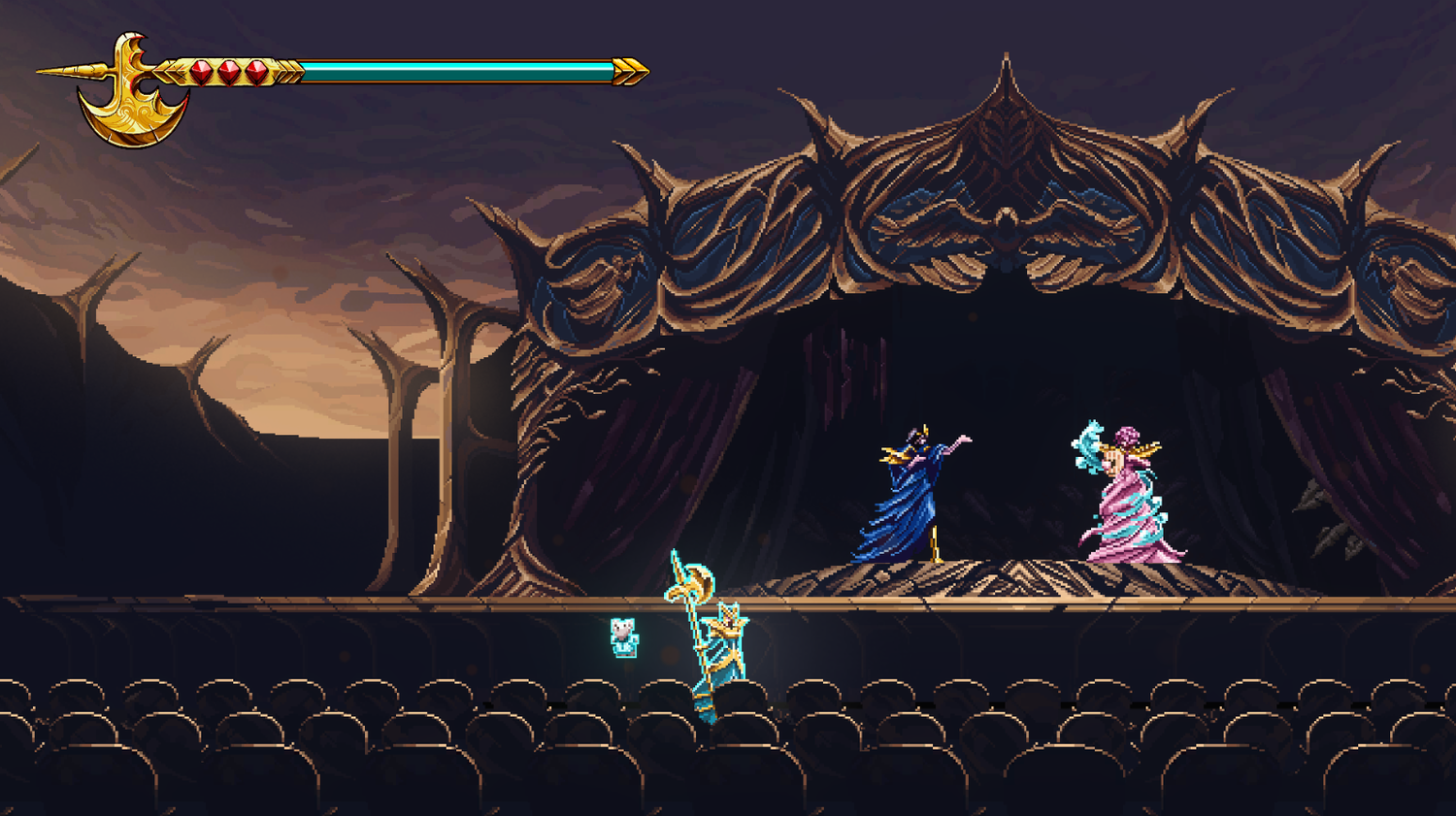"These old shadows parade you like a fool."
Nine years of shadows isn’t a lot, really; I’ve experienced decades more than that. The shadows of my lifetime, however, have all been cast over colors. Not so for our hero, Europa. Living in a world that’s cursed to be colorless, she ventures into the depths of Talos to root out the source of its corruption. But she’s not alone; she has a surprisingly handy magical teddy bear.
As one would expect from a game that takes nearly all of its beats from Castlevania, 9 Years of Shadows centers around exploring a fortress. Each area is broken into individual screens containing a combination of enemies, puzzles to solve, hazards to pass, and secrets to unlock, and characters to meet—good and bad.
Discovering new areas and finally accessing the openings or levels you couldn’t reach before provides most of the game’s rewards.
9 Years of Shadows does a good job of tying access into Europa’s abilities. Early in the game, I could tell there was an accessible area below the surface of the water. However, my character couldn’t dive. Later, Europa received special elemental armor that allowed her to swim. Problem solved, sure, but the armor wasn’t just for diving. The developers tied moving waterfalls into Talos’ layout, requiring Europa to leap from waterfall to waterfall in order to progress. It’s a fun way to make the central character’s abilities matter more than you’d think when first acquiring them.
Speaking of these elemental armors, some enemies are weaker against specific types. These are indicated by colors, tying in nicely with the game’s theme. So, even when you don’t need a specific outfit to progress, you’ll be swapping between them often (a simple button tap) to more efficiently take out enemies.
I should point out that those enemies are usually pretty easy to take out, regardless. Unlike some Castlevania-style games that overload you with defense and attack options, 9 Years of Shadows keeps things 9 kinds of simple. Most enemies require nothing more than your basic dodge move, a close-quarters attack, and specially acquired long-range attacks. The long-range attacks are OP, really, as they can be used intermittently infinitely. Using them depletes your shield. If you’re hit without your shield, you die. However, the aforementioned teddy bear, Apino, can replenish your shield at almost any point. Provided you’re standing on solid ground, holding ZR will quickly fill it up to about 80%. This allows you to stand out of harm’s way while attacking most enemies.
Of course, this isn’t always the best strategy. The game is filled with bosses and mini-bosses, most of which will require you to mix up dodges and attacks while figuring out their patterns. If you’ve become lazy with the ranged attacks, you’re in a bit of trouble. Luckily, bosses are preceded by a save-point. Some are a bit further back than I’d like them to be, but it’s never hard to get back to the fight.
The bosses themselves are often quite impressive, and the battles are fun. They ramp up the challenge considerably, of course, but I never felt victory was beyond one more try. It sometimes took a dozen more tries, but it felt like one would be enough. Oh, and I must once again vote No on the issue of multi-stage boss battles without a save point, although I know I’ll never be on the winning side on that ballot measure.
Visually, 9 Years of Shadows is a lot of fun. The enemies and environments are intricately detailed, and the diverse settings are beautifully colored—the moment when we first pop from grayscale to color is reminiscent of Dorothy landing in Oz. Clearly defined boundaries make Talos easy to navigate, and most of the secret areas provide access clues if you’re paying attention.
Miguel Hasson’s soundtrack is also really good. And considering the game’s emphasis on music and melody, it’s important they were able to check that box. I mean, not only does the game also feature pieces scored by Michiru Yamane (Castlevania series) and Norihiko Hibino (Metal Gear Solid series), it places those composers in the game as NPCs (along with a few other names you’re bound to recognize).
Unfortunately, there are few issues that prevent 9 Years of Shadows from standing at the top of this year’s indie releases. First, the framerate is inconsistent on the Switch. It’s mostly manageable, but sometimes annoying during the boss fights. Second, the ease of progression when you’re not fighting a boss is bound to bore some players. And finally, I did encounter a bug that completely froze the game. This is never a good thing, but it’s worse in games where you’re constantly pushing your way toward the next undiscovered save point.
If you’re able to overlook those issues, 9 Years of Shadows is a solid purchase. Its visuals and gameplay are designed for the big screen, but they scale nicely to handheld mode, making this a worthwhile choice whether you seek a diversion at home, on the go, or…in the shadows.
Review: 9 Years of Shadows (Nintendo Switch)
Good
9 Years of Shadows’ pixel graphics are gorgeous, its story is compelling, and its boss battles are worth the slower moments you have to wade through to get there. It’s a fun adventure that offers enough surprises to keep Castlevania fans engaged throughout.






